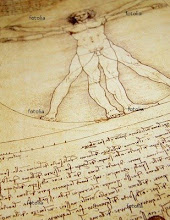Aluminium
Few metals have the characteristics of aluminium: it is light, easy to process and strong (less rigid than steel of course). In architecture, aluminium is used in sheet forms, where the extrusions or sections, where it is used normally cant distinguish it from the steel because of its non-transparent finish. Yet aluminium constructions are potentially much lighter and slender, and much more resistant to corrosion than the famous steel.
Technical aspects
Alluminium is silver white, natural soft material that is easy to cast, rolled into thin foil or drawn out to a fine thread. A thin layer of oxide protects its underlaying surface.
Found in mineral ores such as bauxite. The aluminium is separated out by means of an electrolytic process. The process is knd of intensive and energy consuming, but it makes up for this aspect of environmentally unfriendly, the other positive aspect that it is tottaly recyclable.
Aluminium is non-magnetic and non-toxic. Low density, holds up very well agressive outdoors environment, is ductile and processes good thermal and electrical conductivity. It is possible to create alloys that are significantly stronger than regular steel construction.
Aluminium can be joined by screwing, bolting, welding, brazing or soldering prior to the finish. Adhesive my also be considered in situations where the product is softer.
Applications
Manufactured construction products: doors, window frames, railings, screens, and grilles. Also available in standard forms of bars, rods, tubes and pipes that can be detailed in special shapes.
Aluminium façade elements are often prefabricated in the form of sandwich panels in wich a core of insulation material is sandwiched between thin sheets of aluminium which have already been worked and coated, this process is definitely very interesting. Loadbearing sandwich façades are also available.
Another great invention came from the aviation industry. A new composite form where a layer of polypropylene is added to the sandwich panel, serving as an outer skin aesthetic strong element. There also curved sandwich which are insulated, coming this time from the automative industry where combinations of aluminium and an insulating layer are hot-pressed with the help of moulds.
Finishes
Mechanical, chemical, anodic.
Mechanical buffed produces a smooth specular surface; directional or non-directional textured surface, patterned.
Directional surface: fine satin, medium satin, coarse satin, hand-rubbed, and brushed.
Non directional surface: extra-fine matte, fine matte, medium matte, coarse matte, and fine shot blast.
Chemical finishes: Used to clean, etch, or prepare the material for coating.
Anodic (most common): By a chemical process the final result is a coating of common bronze or black collors.
Alluminium can also be painted, electroplated, covered with porcelain, and powder coated.
Colour: Silver grey
Glossiness: Glossy, satin, matt
Translucence (%) 0 – 20 – 40 – 60 – 80 – 100
Texture: Sharp, medium, dull
Hardness: hard, soft, despressible
Temperature: warm, medium, cool
Odour: Strong, moderate, none
Acoustic opacity: good, moderate, poor

No comments:
Post a Comment